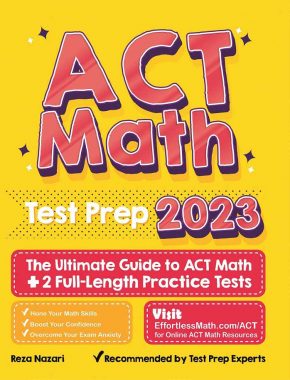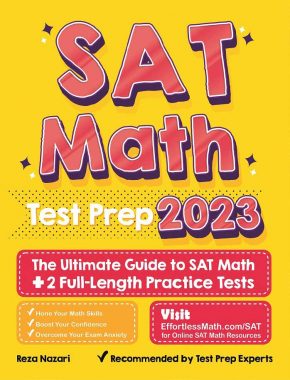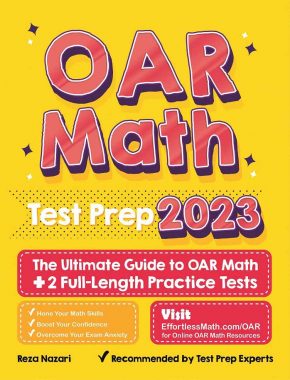How to Find Length of a Vector
The length (or magnitude) of a vector represents the size or amount of the vector irrespective of its direction. It gives you an idea of "how much" of the vector there is. The length is always a non-negative scalar value.

Step-by-step Guide to Find Length of a Vector
Here is a step-by-step guide to finding the length of a vector:
Step 1: Introduction – Vector Basics
A vector in the purest sense is a directional entity with both magnitude and direction. It can be visualized as an arrow pointing in a particular direction, the length of which signifies its magnitude.
Sub-tip:
- Remember: The directionality of vectors differentiates them from scalar quantities, which only have magnitude.
Step 2: Mathematical Representation
For this guide, let’s focus on vectors in the Cartesian plane, especially:
- \(2D\) vectors: Given as \(v = (x, y)\)
- \(3D\) vectors: Given as \(v = (x, y, z)\)
Sub-tip:
- Vector components, such as \(x\), \(y\), and \(z\), represent the vector’s projection on the respective axes.
Step 3: Graphic Visualization
Plot the vector on a graph (\(2D/3D\) as per vector dimensions). Imagine the vector as the hypotenuse of a right triangle in \(2D\) or the diagonal of a rectangular prism in \(3D\).
Sub-tip:
- Visually, you can already gauge the length, but for exact measurements, mathematics comes into play!
Step 4: The Formula – Pythagorean Theorem
To determine the magnitude, the Pythagorean theorem is key:
- For \(2D\): \(|v| = \sqrt{(x^2 + y^2)}\)
- For \(3D\): \(|v| = \sqrt{(x^2 + y^2 + z^2})\)
Sub-tip:
- For vectors beyond \(3D\), extend the formula: \(|v| = \sqrt{(x_1^2 + x_2^2 + … + x_n^2)}\) for \(n\)-dimensional space.
Step 5: Calculation Process
For 2D Vectors:
- Square each component: \(x^2\) and \(y^2\)
- Sum the squares: \(x^2 + y^2\)
- Find the square root of the sum to get the magnitude.
For 3D Vectors:
- Square each component: \(x^2, y^2\), and \(z^2\).
- Sum the squares: \(x^2 + y^2 + z^2\)
- Calculate the square root of the sum.
Sub-tip:
- Precision is key! Ensure you use a calculator with enough decimal places if dealing with intricate vectors.
Step 6: Verification
Once you’ve determined the magnitude, it’s always a good practice to verify. Plot the vector and see if the calculated magnitude aligns with your visual interpretation.
Sub-tip:
- Use software or graph plotting tools for an accurate representation.
Step 7: Beyond Basic Vectors
If you’re dealing with vectors in non-Cartesian coordinates (like polar, spherical, or cylindrical), you’d require coordinate transformations first before determining magnitude.
Sub-tip:
- Study transformations keenly; they can become very handy in advanced physics and engineering tasks.
Step 8: Conclusion & Application
Understanding vector magnitude is foundational in fields like physics, engineering, computer graphics, and even in some advanced economic models. Whether you’re analyzing forces, velocities, or other vector quantities, knowing how to determine magnitude is quintessential!
Sub-tip:
- Always seek real-world applications of your mathematical findings. This helps solidify understanding and appreciation.
With this structured and complex guide, you’re not just learning the process but also the intertwined intricacies of vectors in various dimensions and their relevance. Happy vector hunting!
Examples:
Example 1:
Find the length of the vector \(b=(6,8)\).
Solution:
To find the length (or magnitude) of a \(2D\) vector, we use the formula: \( ∣b∣\)\(=\sqrt {x^2+y^2}\)
Where \(x\) and \(y\) are the components of the vector.
For vector \(b\):
\(x=6\)
\(y=8\)
Plug in the values:
\( ∣b∣\)\(=\sqrt{6^2+8^2}\)
\( ∣b∣\)\(=\sqrt{36+64}\)
\( ∣b∣\)\(=\sqrt{100}\)
\( ∣b∣\)\(=10\)
So, the length of the vector \(b\) is \(10\).
Example 2:
Find the length of the vector \(e=(−3,9)\).
Solution:
For a \(2D\) vector, the formula to find its length (or magnitude) is: \( ∣e∣\)\(=\sqrt{x^2+y^2}\)
Where \(x\) and \(y\) represent the vector’s components.
Given vector \(e\):
\(x=−3\)
\(y=9\)
Insert the values into the equation:
\( ∣e∣\)\(=\sqrt{(−3)^2+9^2}\)
\( ∣e∣\)\(=\sqrt{9+81}\)
\( ∣e∣\)\(=90\)
The length of the vector \(e\) is \(90\). Simplifying further: \( ∣e∣\)\(=3\sqrt{10}\) Which, when approximated to two decimal places, equals \(9.49\).
Related to This Article
More math articles
- Journey to the Stars: How to Solve Circles Word Problems
- Top 10 6th Grade OST Math Practice Questions
- 10 Most Common SIFT Math Questions
- Best Laptops for High School Students: 6 Things to Consider
- The Ultimate 4th Grade STAAR Math Course (+FREE Worksheets)
- Top 10 5th Grade STAAR Math Practice Questions
- FREE CLEP College Math Practice Test
- Top 10 5th Grade Georgia Milestones Assessment System Math Practice Questions
- How to Unlock the Path to Success: “TExES Core Subjects Math for Beginners” In-Depth Solution Manual
- 5th Grade Common Core Math FREE Sample Practice Questions
























What people say about "How to Find Length of a Vector - Effortless Math: We Help Students Learn to LOVE Mathematics"?
No one replied yet.